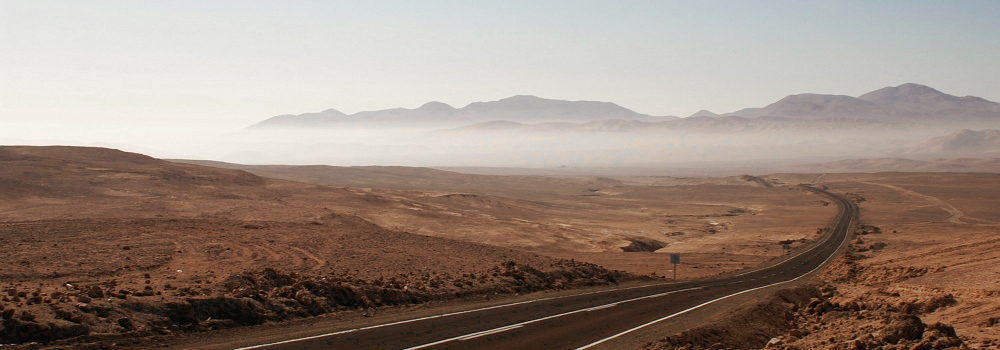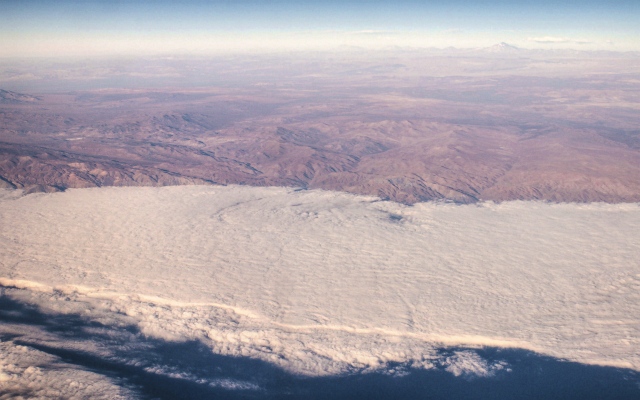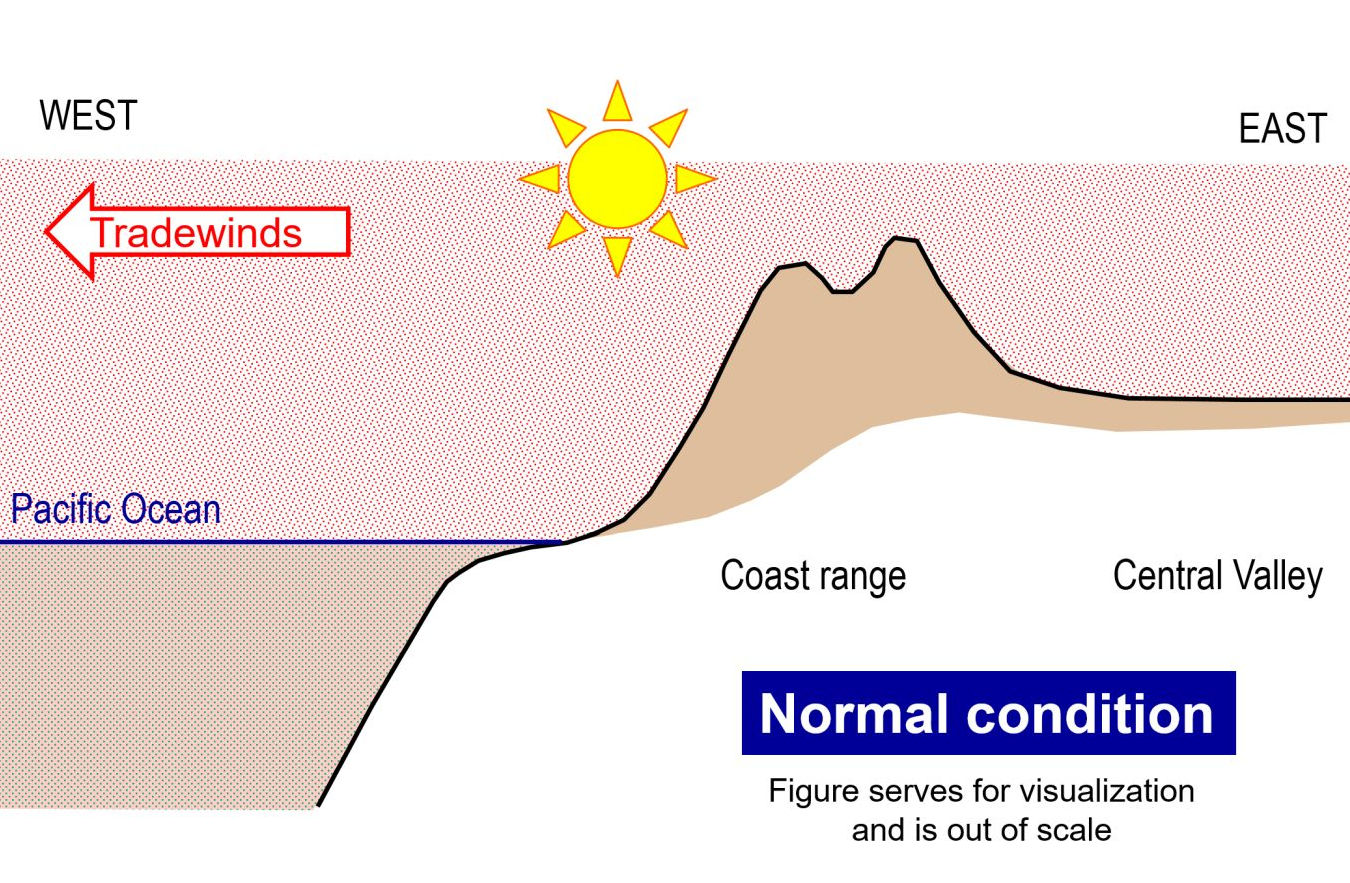

On the eastern side of the Andes, sunny weather often prevails along the entire length of Peru, and northern and central Chile. Rain is uncommon and mainly occurs in relation with some very specific meteorological phenomena. However, when approaching the coast from the mountainside or, in Chile, from the Central Valley, one often dives into coastal clouds and fog, particularly in winter. This happens independently whether one travels from Huaraz down to Lima, from San Pedro de Atacama to Iquique or Antofagasta (as shown in the title image), or from Portillo or Santiago de Chile to Viña del Mar or Valparaíso. There is hardly any rain in or beneath the coastal fog. The existence of those fog deserts is the consequence of a complex interplay between ocean and atmosphere, which shall be investigated in some detail in this contribution. Let us first discover the major components of this system, and put the puzzle together afterwards. We will start at the beach of Viña del Mar in central Chile.

A swim in the Pacific Ocean
Click on the arrow to start the video.
Lisa and Martin, who have just descended from an exhausting excursion to Portillo in the Andes, look forward to a swim in the Pacific Ocean at the beach of the Chilean seaside resort of Viña del Mar. They want to enjoy the expected warm water, which they know from the Mediterranean Sea which is located at a comparable geographic latitude. Something, however, seems to be wrong with the water.
Watch the video, and try to interpret the reaction of Lisa und Martin after they have entered sea. Thereby you can practice your German language skills.
Show solution
Cast: Lisa-Maria Kogler and Martin Mergili | Camera: Sandro Schlaffer | Scripted and directed by Martin Mergili

Coastal fog and coastal desert


Click on the arrows or into the photograph to dive into the coastal fog.
Particularly in winter, a persistent cloud cover can be observed along the west coast of the South American continent. Not only - as we already know - the sea surface temperature, but also the air temperature is extraordinarily low for the latitude, particularly in the tropical areas. In Lima, winter temperatures hardly exceed 20°C despite the location close to the equator. Particularly in the extremely arid coastal areas of southern Peru and northen Chile, some sparse vegetation is almost only concentrated along the slopes of the coast ranges.











